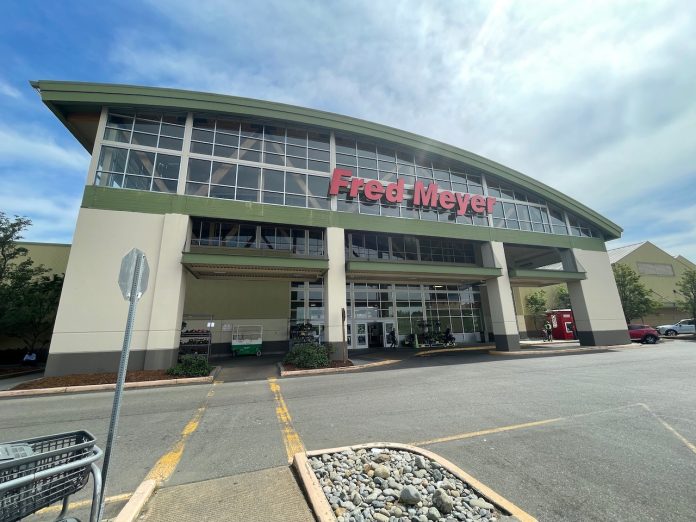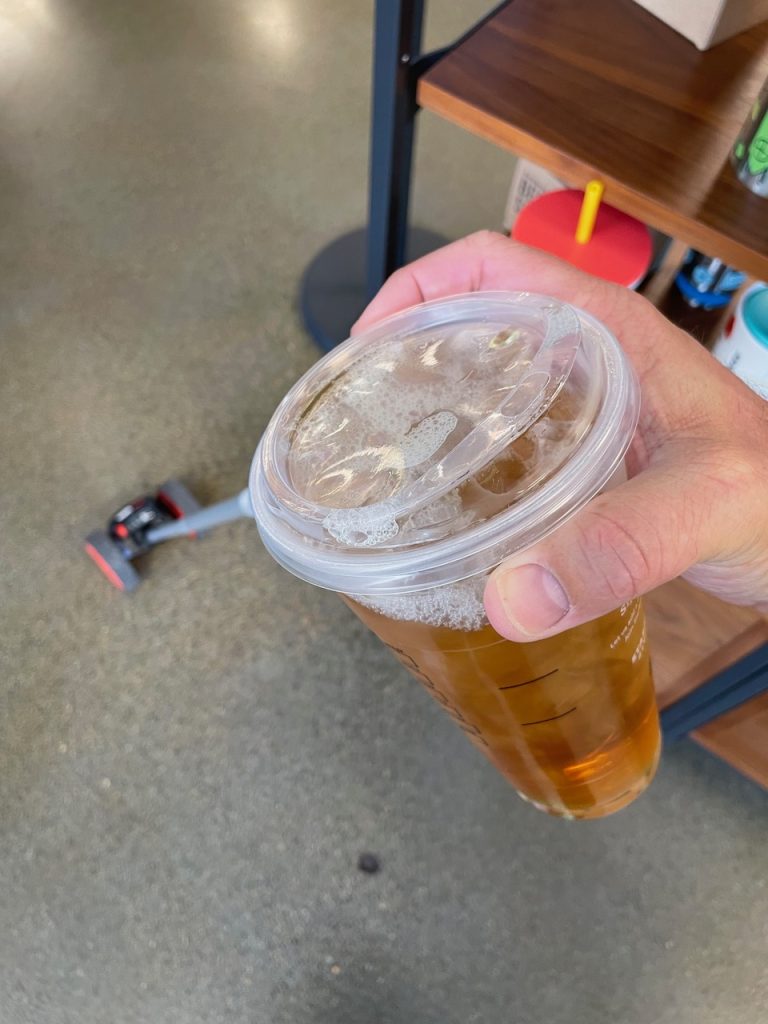The distance to carry a bag of food is only argued against cities, never getting them to your car in the first place.
Enter any discussion about slightly altering the number of cars in the city, and the first, often loudest, argument is “how will I get my groceries from the car!?” It comes up when a building is planned without parking. It comes up when traffic is limited on a street. It comes up when you ask someone the time.
Besides the facial selfishness of determining infrastructure by one person’s need to transport packs of individually sliced cheese, the use of groceries, as a whole, is ridiculous. Families have different needs. People have different preferences in shopping and transport and food. And the American system of grocery shopping at giant mega-lo-marts was built around cars, so using them to justify cars is self-fulfilling.
Except that getting groceries home from a giant box store is a perfect illustration of the standards we apply to cities, and how different they are from the standards applied to suburbs and the stores themselves. By the time someone gets groceries to their car from the store, they’ve covered more distance than it will ever take to get them home.
The modern grocery store is enormous. Urban footprint grocery stores run 20,000 square feet, and the national average is closer to 40,000 square feet. That is an acre, a square about 200 feet on each side. Other stores get much larger, with the average full-sized Target at 125,000 square feet, and the multi-department Fred Meyer at 150,000 square feet. That’s just a little under three football fields. Even relatively compact stores like Trader Joe’s or Bartell’s come in over 10,000 square feet, or 100 feet per side.
That means a shopping trip to even the most modest stores requires a hike. How much walking does it take to move through a grocery store?
I ran the rolling tape measure (his name is Umlaut) out to a couple stores to figure out how much distance it functionally takes to get out and back from the parking lot to something basic, like the milk fridge. It’s a lot.
The most minimal walk around the Ballard Fred Meyer, going from the driveway to the milk case and through the registers, is 832 feet. This is measuring from the front driveway where several retirement communities drop off residents, going directly back to the milk case, and then coming through the closest register. Little variations like a stop by the pharmacy, or a pickup in the parking lot rather than the drop-off circle, and the total is over 900 feet.
A lot of resistance to pedestrian streets has arisen around Ballard because the successful pergolas and outdoor street cafes have prompted questions of why we allow cars on Ballard Avenue anyway. The street is already closed on Sundays for the Farmer’s Market after all.
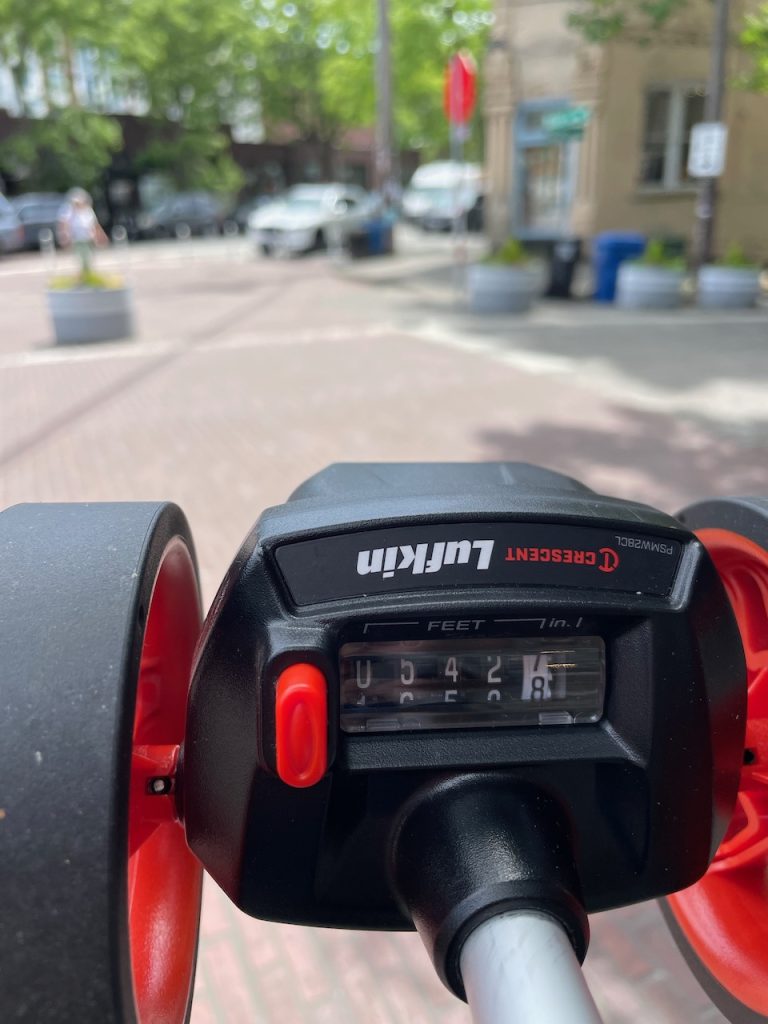
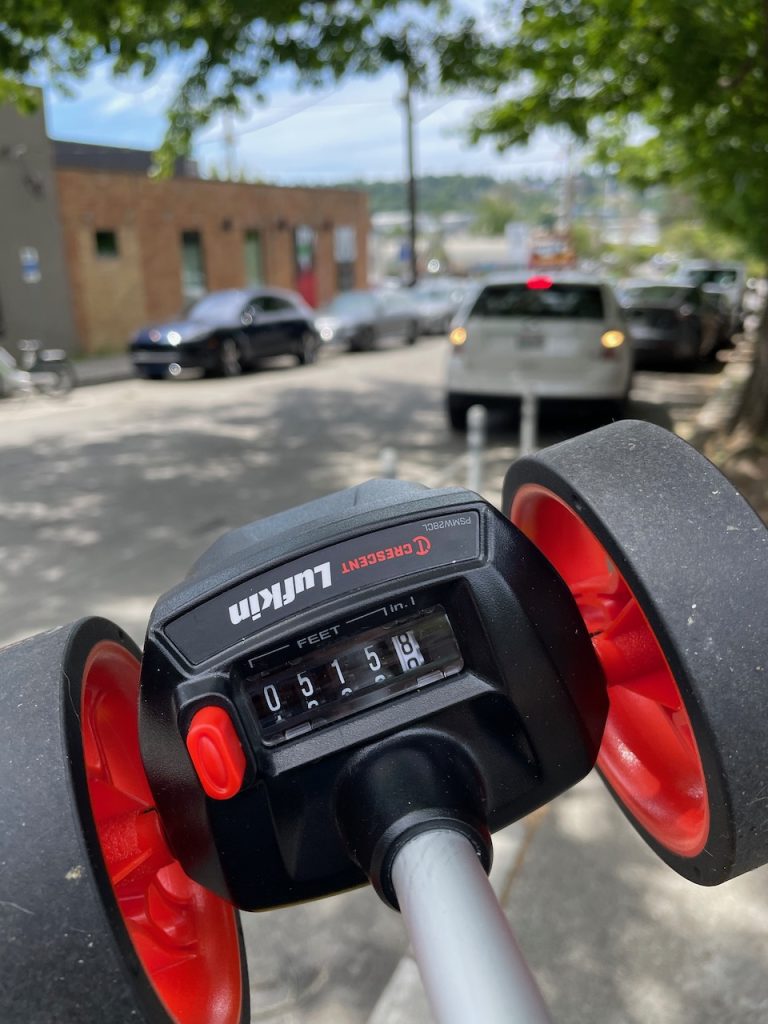
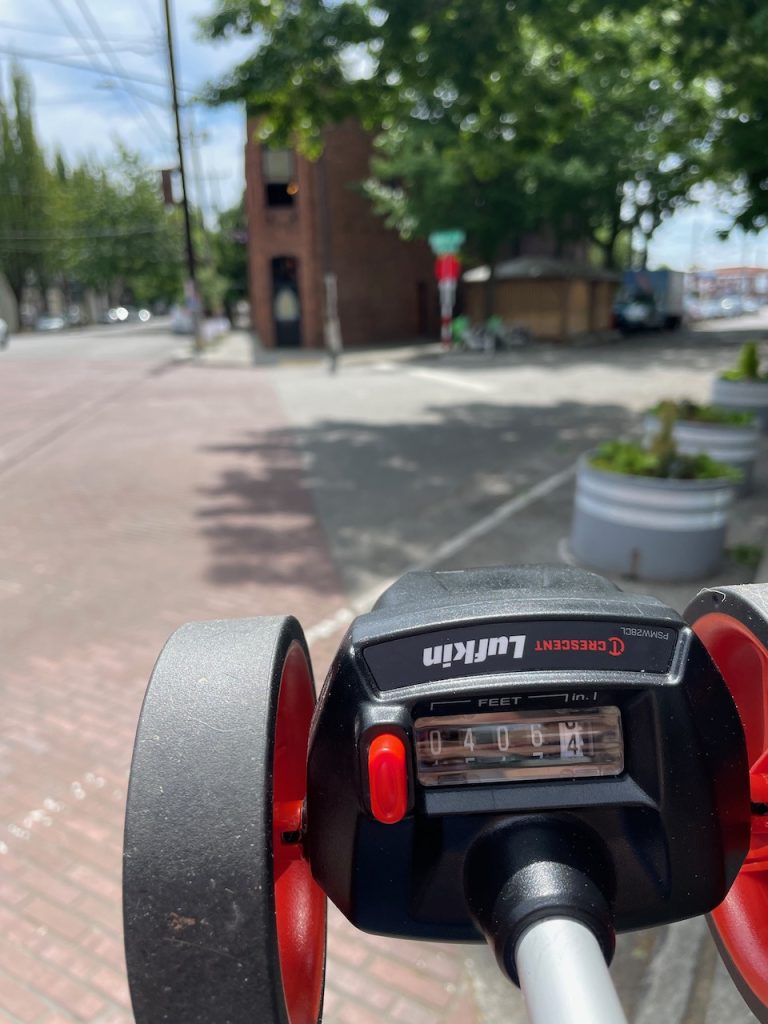
There is no block along Ballard Avenue that is longer than the expedition it takes to buy milk at Fred Meyer. Measuring the longer west side of each block (and following a longer, realistic path that rolls around tree wells and people) the 5200 block of Ballard Avenue (Tractor Tavern) is 406 feet, the 5300 block (Sabine) is 515 feet, and the 5400 block (Skal) is 542 feet. In all these cases, one can go at least halfway down the next block and still take fewer steps than it takes to grab a gallon of milk at Fred Meyer.
Of course Fred Meyer is notably large and the milk is at the back. Some store like the full-sized Target in Lynnwood puts their milk in the front. That trip still requires a hike of 858 feet to get out and back from the closest parking space. Such a trip doesn’t include picking up anything besides milk. The short aisles on the perimeter of the store run between 15 and 20 feet each, which can add up quickly.
Even a small store like Bartell’s is still a hundred feet on a side. Getting milk at the urban footprint location in Ballard Commons requires a walk of 308 feet to get to the milk. It’s 371 feet total to additionally pick something up from the pharmacy.
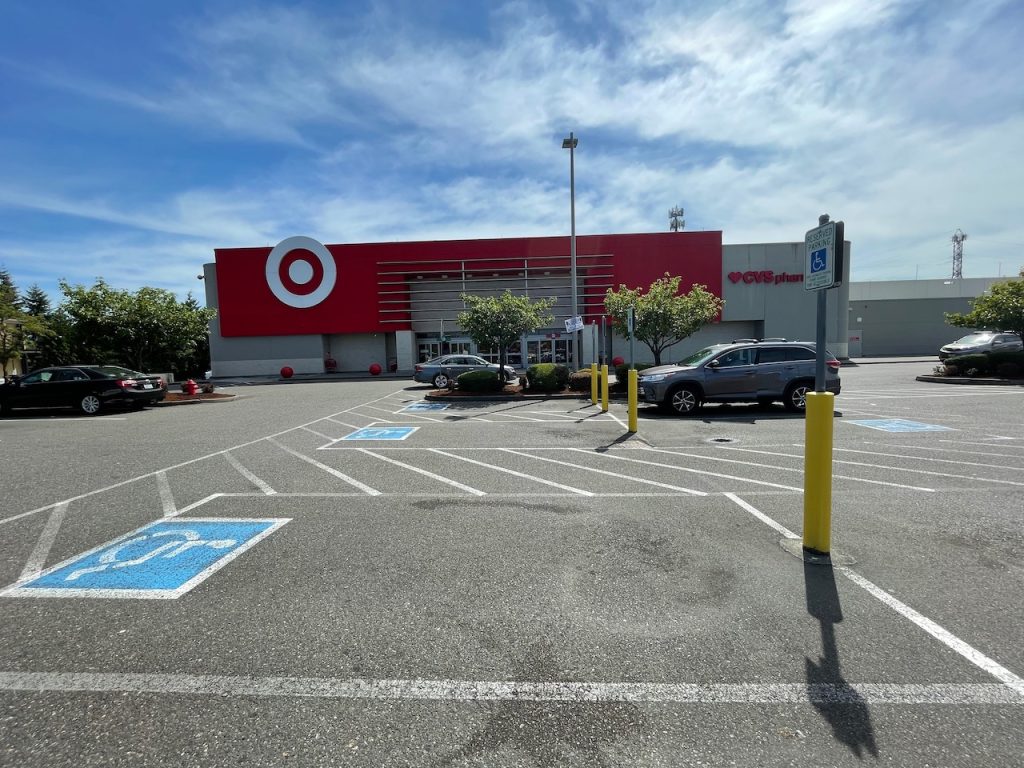
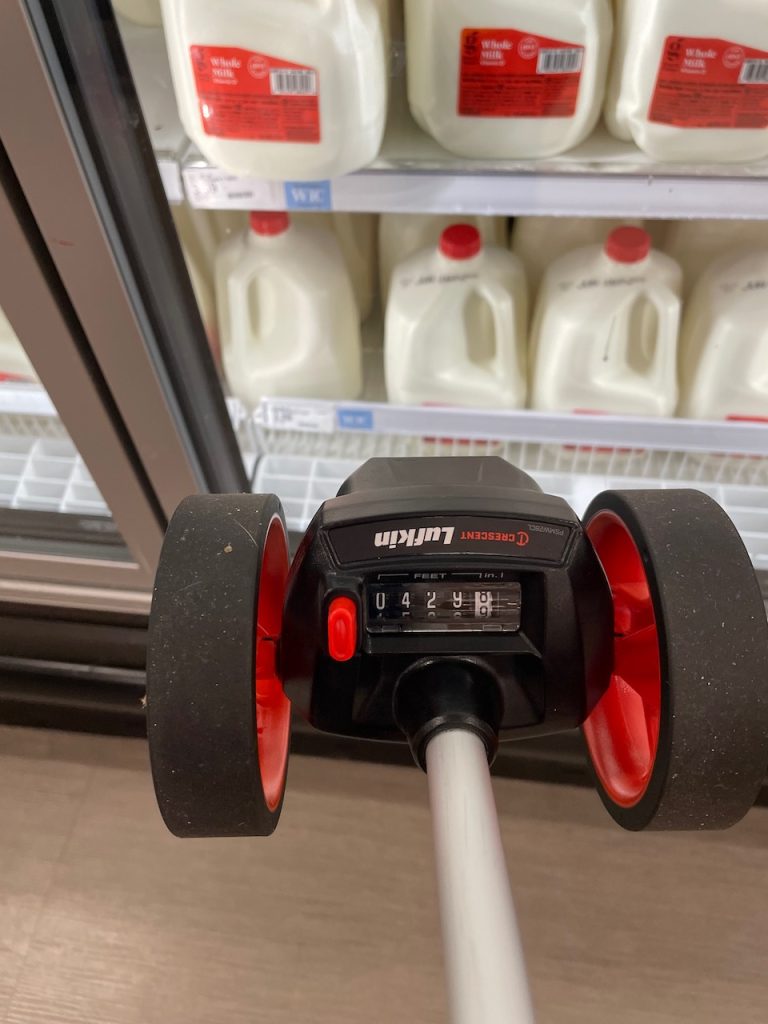
That total doesn’t change much with indoor parking. In and out of urban footprint QFC in Ballard from the 44 route bus stop totals 644 feet. While the elevator from the underground garage emerges inside, it’s still at the opposite corner so the total distance is just a foot shorter. A quick stop at Starbucks for a tea, so that added a few feet. But it illustrates the point that no one is grocery shopping in a straight line.
Now, it’s easy to argue that people have grocery carts, and that’s accurate (though cart use is often overestimated). How about shopping where carts are not used, like Alderwood Mall. We forget that the mall is huge. Walking from the closest accessible parking space and strictly around the food court totals up to 701 feet. To walk the shortest distance from that accessible space to the closest accessible parking in another location (Nordstrom’s) is 1167 feet.
A realization of the size of these shopping areas also unwinds some of the argument about business’ need to preserve full-time automobile access for deliveries. If 830 feet is the distance across Fred Meyer and back from parking, it’s also far less than the distance from the rear loading dock to any point in the store. The longest facade of Pike Place Market, along Pike Place itself from DeLaurenti down to the clock then around to North Arcade, is also just over 850 feet. Fred Meyer figures out how to distribute goods in such an area without cars and trucks inside. The Market folks are smart enough to figure out how to do it by just keeping the cars out. Pedestrianize Pike Place now.
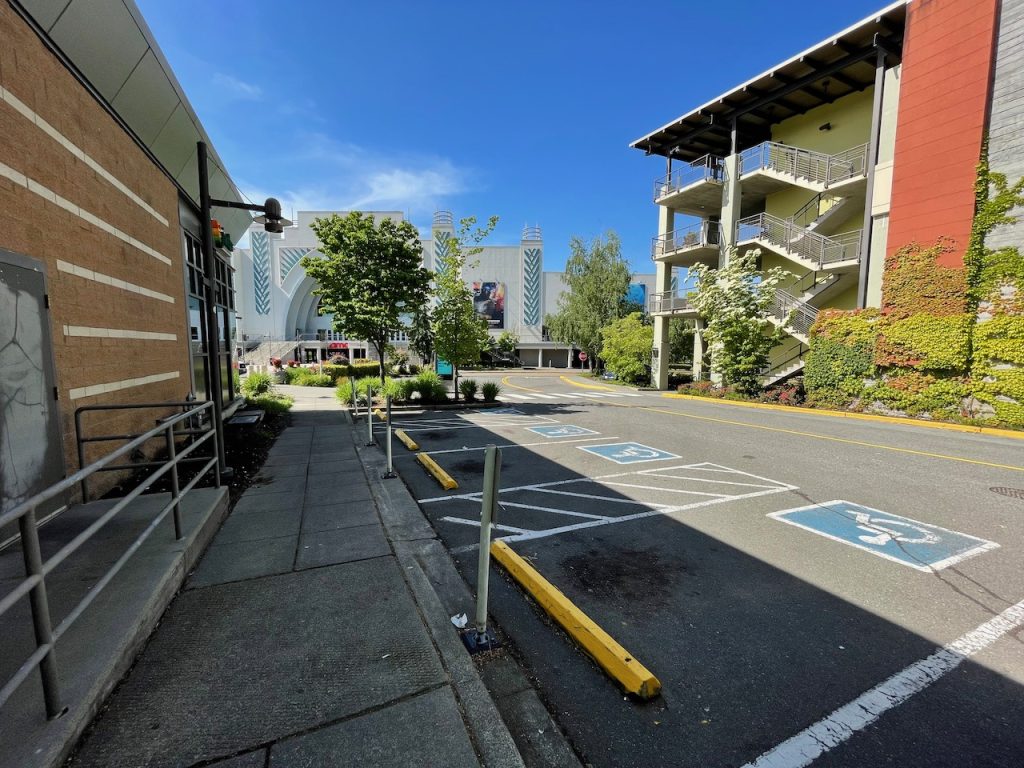
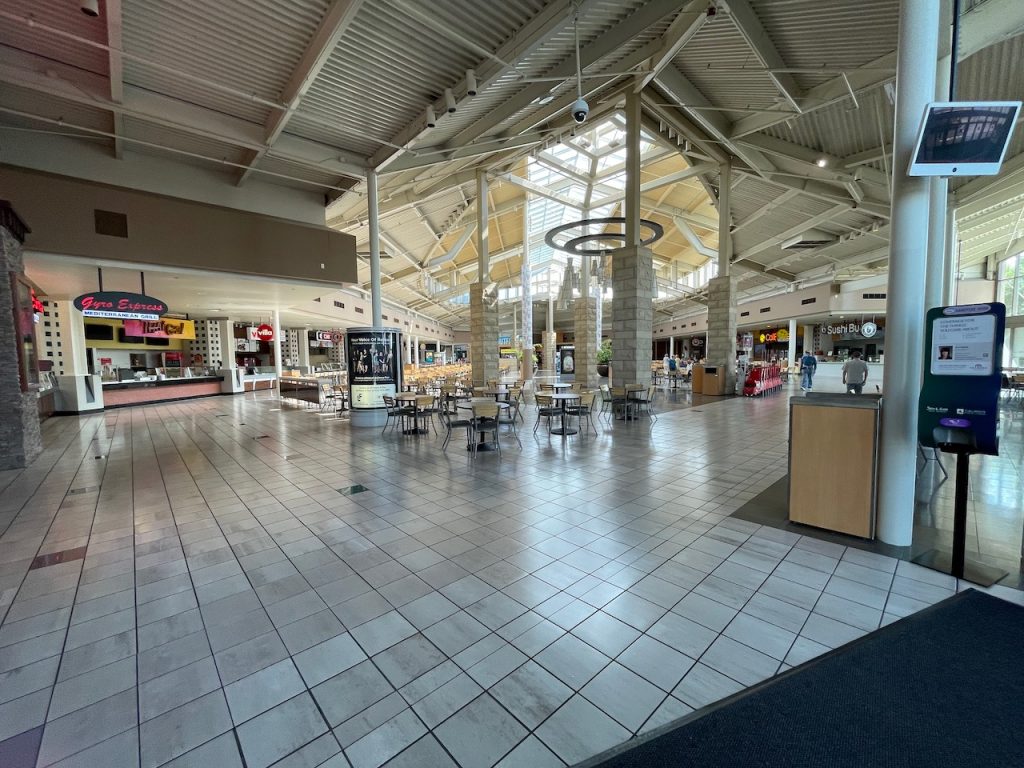
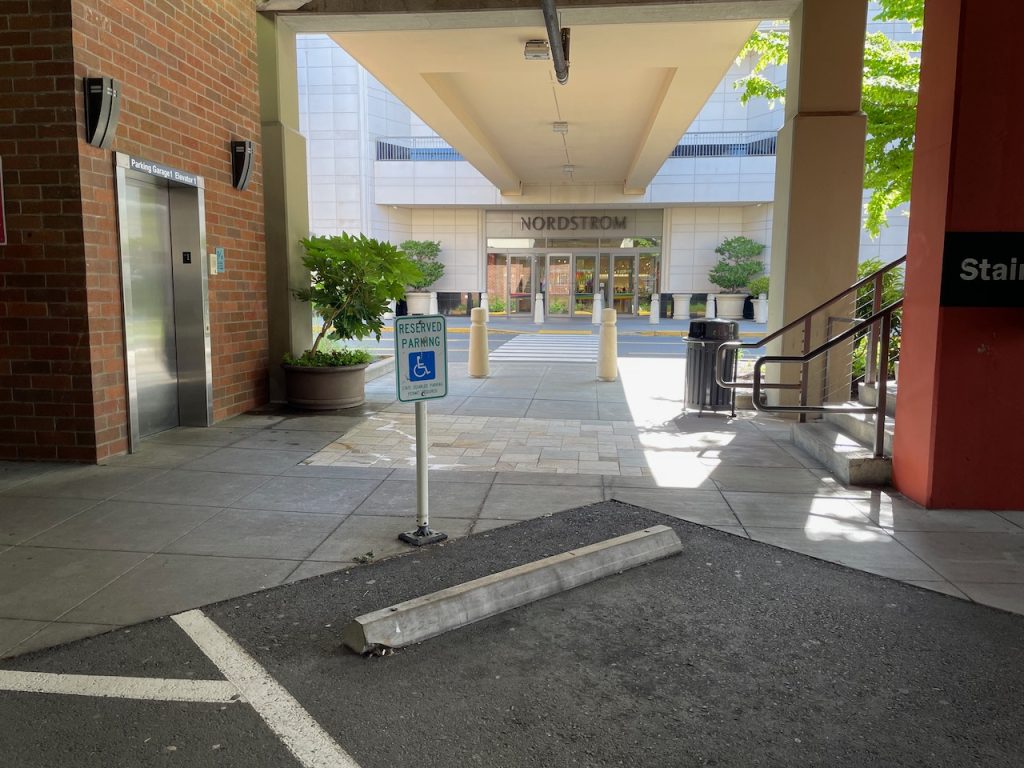
The howl of “how will I get my groceries from the car” is just a wrong metric to apply to city blocks when people have already traveled multiple times that distance to get the groceries they’re bringing home. It’s a design standard applied to cities that gets completely dropped when suburban scale comes into play.
Now, it would be easy to just say these folks are straight up segregationists leaning on accessibility to prevent change from coming into their communities. Alternately, we could presume good intent and try to dig a little into the question. Once we know the basic wrongness of the “get groceries home” question, we can try to understand what’s driving such a knee-jerk reaction.
First, the question itself is a measure of security. A 2020 study out of Poland observed that distance to a grocery weighed heavily on the perception of food security by the elderly. The seniors who lived in areas with more distance or fewer groceries reported high enough insecurity that it negatively impacted their diets. One can’t help but hear “how do I get groceries home?” as a cry to avoid such feelings.
The challenge to overcome this issue wouldn’t be maintaining easy parking. It would be increasing varied ways to get food close by. The model of a grocery store that requires an enormous parking lot for access is waning as more chains develop models that fit into cities. While the concept of apartments over groceries sparked controversy in Queen Anne, Safeway is probably doing more than any other single group to reduce the distance between people and food in Seattle with other developments in Capitol Hill, Magnolia, and U Village.
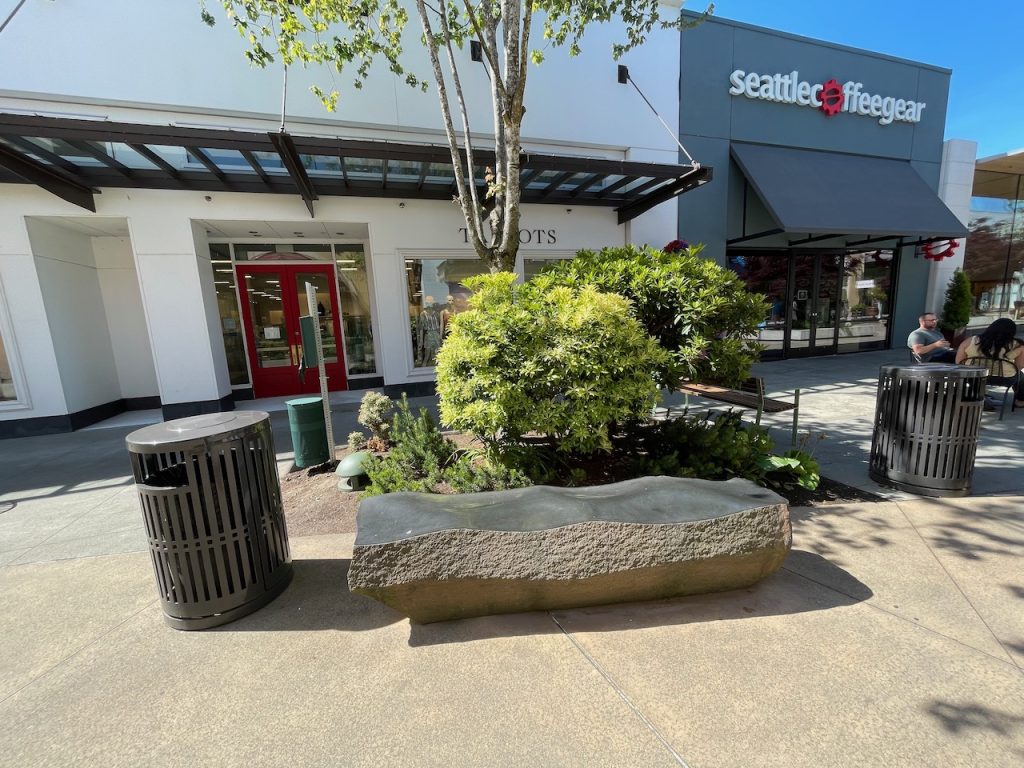
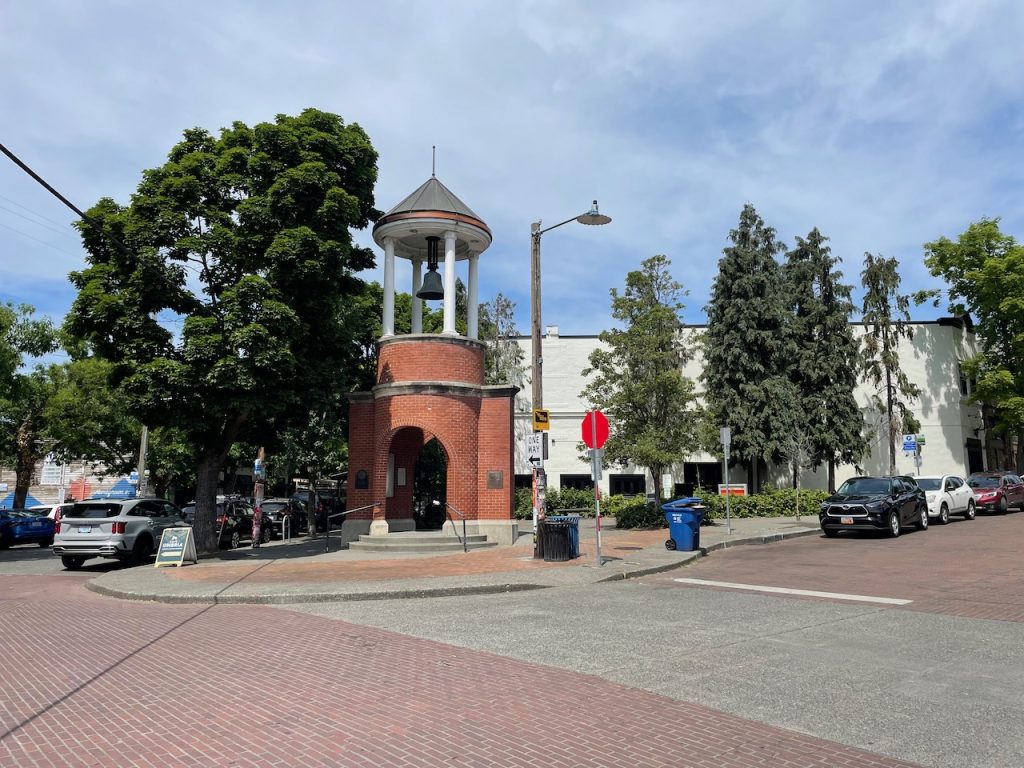
Second, the question isn’t always about groceries, it’s also about comfortable personal space. People’s cars are an extension of their homes. A car trip to the store is less time outside of that secure bubble than a bus trip shopping, even if the walking distances are similar.
We can see the value of that comfort differential by looking at the mall. Alderwood Mall has an outdoor pedestrian shopping street featuring REI and Williams Sonoma that at 791-feet long is 45% longer than anything on Ballard Avenue. But there’s a place to sit every 100 feet and a restroom. City blocks don’t have that. The only public seating area on Ballard Avenue is Marvin’s Garden under the bell tower, about a thousand feet from Tractor Tavern. And there are no public restrooms.
Pedestrianizing streets is not just about removing cars, it’s about re-introducing humans. Places to sit, shelter from the elements, and bathrooms are all vital. There is a chicken-and-egg problem that we don’t have space to add these elements with so much of the right-of-way taken up by cars. Still, advocates for open, car-free streets have to put human elements much higher into the discussion.
So it is accurate to dismiss the “how will I get my groceries from the car” as a backwards attempt to scare people and drive away new neighbors. We can also understand the underlying reaction as a blueprint to build better pedestrian streets. There are reasons malls and big boxes are successful pedestrian spaces. The movement to build car-free streets doesn’t have to copy the mall, it just needs a place to sit and think hard about what makes those facilities comfortable.
Ray Dubicki is a stay-at-home dad and parent-on-call for taking care of general school and neighborhood tasks around Ballard. This lets him see how urbanism works (or doesn’t) during the hours most people are locked in their office. He is an attorney and urbanist by training, with soup-to-nuts planning experience from code enforcement to university development to writing zoning ordinances. He enjoys using PowerPoint, but only because it’s no longer a weekly obligation.

